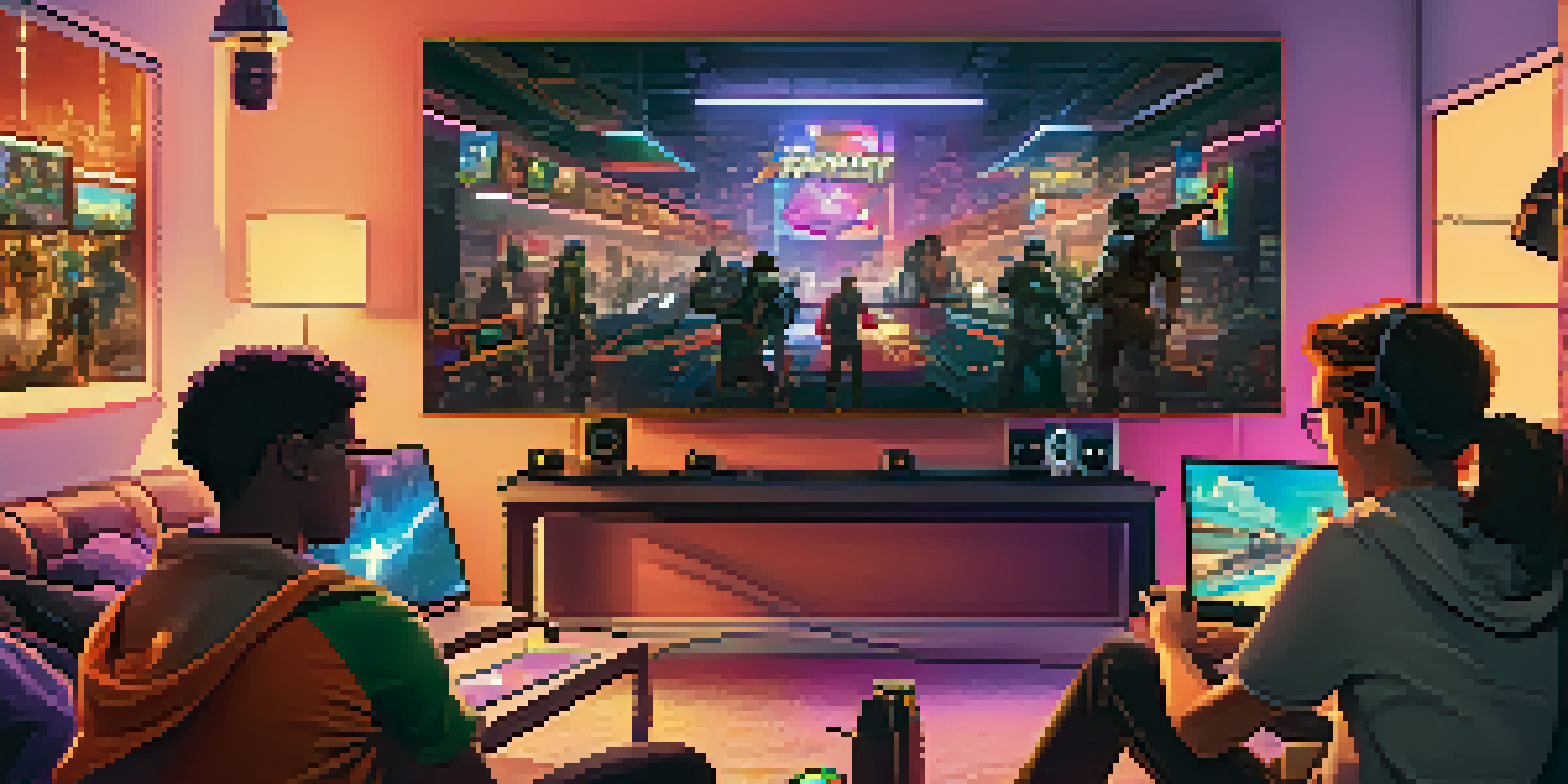Cross-Platform Play: Bridging the Gap Between Gamers

What is Cross-Platform Play and Why It Matters
Cross-platform play, often referred to as cross-play, allows gamers on different hardware platforms to play together in the same game. This means, for instance, that a player on Xbox can compete with friends on PlayStation or PC. The significance of this capability can't be overstated; it breaks down barriers that once divided the gaming community.
Gaming is not just about winning or losing; it's about the connections we make along the way.
Imagine a world where your gaming buddies aren't limited by their console choices. With cross-play, geographical and hardware constraints fade away, fostering a more inclusive gaming environment. This unity not only enhances friendships but also increases the player base for games, creating a richer experience for everyone involved.
Ultimately, the rise of cross-platform play reflects a broader trend in the gaming industry toward community and collaboration. As gamers increasingly seek connections beyond their immediate circles, the ability to play together, regardless of device, becomes essential to the gaming experience.
The Evolution of Gaming Platforms and Cross-Play
Historically, gaming platforms operated in silos, with exclusive titles and player bases. Players often found themselves tethered to a specific console or PC, limiting their ability to connect with friends on different systems. However, as technology advanced, so did the desire for a more interconnected gaming experience.

The push for cross-platform play gained momentum with the rise of online gaming and multiplayer experiences. Developers began to recognize that allowing players to join forces or compete against one another regardless of their chosen platform could enhance engagement and satisfaction. This shift led to a few trailblazing titles that championed cross-play, paving the way for the future.
Cross-Play Breaks Down Barriers
Cross-platform play allows gamers on different devices to connect, fostering a more inclusive community.
Today, major gaming companies are embracing this model, realizing that collaboration can lead to greater success. By prioritizing cross-platform capabilities, developers can not only attract a larger audience but also foster a sense of community that transcends hardware limitations.
Popular Games That Embrace Cross-Platform Play
Several popular games have embraced cross-platform play, showcasing its potential to unite gamers. Titles such as Fortnite, Call of Duty: Warzone, and Rocket League have led the charge, allowing players from various consoles to team up or face off. This not only enhances the gaming experience but also creates a diverse player pool that keeps the competition fresh.
The future of gaming is about inclusivity and community, where barriers are broken and friendships flourish.
For example, Fortnite has become a cultural phenomenon, in part due to its cross-play feature. Gamers can drop into the same match regardless of whether they’re on a PlayStation, Xbox, Nintendo Switch, or a PC. This has made it easier for friends to connect and share experiences, leading to memorable moments that transcend individual platforms.
Moreover, the success of these games has encouraged other developers to follow suit. As players become aware of the benefits of cross-platform play, they’re more likely to support games that offer this feature, pushing the industry toward greater inclusivity.
The Benefits of Cross-Platform Gaming
Cross-platform play offers numerous benefits that enhance the gaming experience. First and foremost is the ability to foster friendships and connections among players who might otherwise be separated by platform choices. This capability means players can unite, share strategies, and enjoy their favorite games together, regardless of their device.
Additionally, cross-play can lead to a more balanced competitive environment. With a larger pool of players, matchmaking becomes more efficient, allowing for better skill-level alignment. This ultimately results in more engaging and challenging gameplay, as players face off against others of similar abilities.
Community Drives Cross-Play Demand
The gaming community's advocacy for cross-platform capabilities encourages developers to create more inclusive games.
Finally, cross-platform play encourages developers to create more innovative and engaging content. With a broader audience, developers can take risks in their game design, knowing that their creations can reach a diverse community of players. This can lead to unique gaming experiences that might not have been possible in a segmented market.
Challenges in Implementing Cross-Platform Play
Despite its many advantages, implementing cross-platform play is not without challenges. Technical hurdles, such as ensuring compatibility between different hardware and software systems, can complicate development. Each platform has its unique architecture, which can make it difficult for developers to create a seamless experience across all devices.
Moreover, issues related to balance and fairness can arise in competitive games. Different platforms may have varying control schemes, which could give some players an advantage over others. Developers must carefully consider these factors to maintain a level playing field for all participants.
Lastly, there are often business considerations at play. Some companies may hesitate to allow cross-platform gaming due to concerns about revenue sharing or losing player exclusivity. Striking a balance between collaboration and competition among console manufacturers can be tricky, but it’s crucial for the future of cross-platform play.
The Role of Community in Cross-Platform Play
At the heart of cross-platform play lies the gaming community. Players are often the driving force behind the demand for cross-play capabilities, advocating for a more inclusive gaming environment. As gamers express their desire to connect with friends across different platforms, developers have been compelled to listen.
Online forums, social media, and gaming events serve as spaces for players to voice their opinions and share experiences. These platforms not only facilitate discussions about cross-play but also create a sense of belonging among gamers. When players come together to support a common cause, it strengthens the community and encourages developers to prioritize cross-platform features.
Future of Gaming Is Cross-Platform
As technology evolves, cross-platform play is set to become a standard feature, enhancing collaboration among players.
Ultimately, the community acts as a catalyst for change in the gaming industry. As more players advocate for cross-platform play, it’s likely that we’ll see an increasing number of games embracing this model, further bridging the gap between gamers everywhere.
The Future of Cross-Platform Play
Looking ahead, the future of cross-platform play appears bright. As technology continues to evolve, the barriers between gaming platforms are likely to diminish even further. Developers are becoming increasingly aware of the benefits of cross-play, and many are prioritizing it in their game design processes.
Moreover, as the gaming community grows more vocal about their preferences, we can expect to see even more games adopting cross-platform capabilities. This shift not only enhances the gaming experience but also promotes camaraderie among players. The more we play together, the more we can learn from one another and enjoy our shared passion for gaming.

In conclusion, cross-platform play is more than just a trend; it’s a movement toward a more unified gaming landscape. As we continue to embrace this evolution, the gaming world will become a more connected, inclusive, and engaging space for everyone.